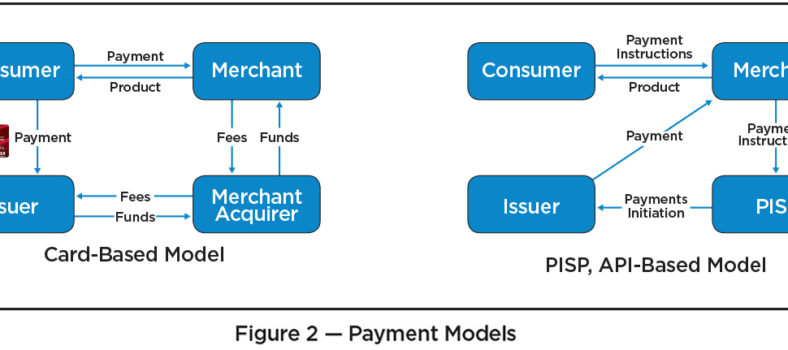 By Stacy Gorkoff
By Stacy Gorkoff
The Greek philosopher Aristotle once said, “The whole is greater than the sum of its parts.” When it comes to guaranteeing that every payment transaction completes as expected, this statement could not be more accurate.
For retail banks, independent ATM deployers (IADs) and payment processors, transactions are the lifeblood of their businesses. Mission-critical functions, such as ATM driving, card issuing and merchant acquiring, require that every transaction gets routed and processed as expected. Any disruptions in payment service level delivery can have a significant impact on the customer experience (CX), reputation and profitability.
But ongoing mergers, acquisitions and the expansion of alternative and card-not-present payment services have made end-to-end visibility across the payments infrastructure challenging. Today’s transactions often traverse multiple systems, networks, switches, real-time card rails and payments channels: with each piece being managed in individual silos. A fragmented management approach makes it tougher to isolate fraud attacks before major damage is done, and almost impossible to efficiently, and effectively, maintain enterprise-wide operational control.
Breaking down the silos
This is why we are starting to see more financial organizations looking to adopt solutions that help to break down the barriers of operational and infrastructure silos. In an effort to combat increasing complexity in payment ecosystems, there is a major trend towards network operations, application support, channel systems management, fraud and security teams collaborating on everything from infrastructure design to incident response.
The Network Management Megatrends 2018: Exploring NetSecOps Convergence, Network Automation and Cloud Networking report, published by Enterprise Management Associates (EMA) in April 2018, uncovered the two most common root causes of complex IT service problems that drive cross-domain responses. These are network infrastructure issues (40 per cent) and security events (37 per cent). Addressing them, the aforementioned teams are exploring new ways of working together to drive efficiency, reduce operational costs, speed up fraud detection and support the unified goal of delivering the best end-to-end CX possible.
The trend towards enabling collaboration is fuelling the need for a new breed of cross-functional, network-based data acquisition and monitoring solutions. These applications centralize real-time payment data acquisition and provide the ability to customize dashboards, rules-based alerts, analytics feeds and machine learning to makethis data easily accessible by any team that needs them. These adaptive solutions are designed to pick up on system performance issues or compromises in real time, while also analyzing the risk of every individual payment transaction flowing across the enterprise-wide payments infrastructure: regardless of which channel they originated from.
Enhanced key processes
Some of the key processes enhanced by a cross-functional solution such as INETCO Insight include, along with best practices:
Continuous performance monitoring across the enterprise-wide payments infrastructure. Consolidate transaction-level performance monitoring across all channels to understand what happens to a transaction before it makes it to the switch, when it reaches the switch and after it leaves the switch. A centralized view into the real-time performance of self-service devices, networks, legacy systems, third-party application connections, host authorization points and multiple switches (i.e. active/active environments) translates into an average reduction in transaction failures of 25 per cent;
Faster research and problem isolation. Implement customizable, real-time alerts that provide a list of the transactions that triggered the alert. Within two to three clicks, you are reviewing a detailed profile containing all the response and request timings, network-level communications details and application-level message data for each flagged payment transaction. Share this centralized view amongst your operations, switch support and channel systems teams to avoid blamestorms and quickly identify who owns the problem: it can result in an average 65-75 per cent faster mean-time-to-repair (MTTR) rate;
Optimized data acquisition and on-demand payment analytics. Optimize data acquisition and decode all the application-level messages and network-level communications information found within each transaction for customizable analytics dashboards. The rich intelligence found in each transaction supports the production of customer usage reports, helps to identify new business opportunities and speeds up decisions around channel performance, profitability, capacity, device placement, availability, UI changes, cash forecasting and card program offerings by 50-75 per cent;
Real-time payment fraud detection and improving the security of the payments switch. Add real-time risk scoring for every individual transaction, integrate card blacklists and provide instant detection of missing links indicative of “man-in-the-middle” malware attacks, message field tampering, unexpected declines, stand-ins, chargebacks and reversals. The ability to capture end-to-end transaction data across all payment channels and apply rules-based alerts, behavioural algorithms and machine learning models means suspicious transactions and payment outliers can be identified, investigated and blocked at the transaction level: in milliseconds; and compliance and independent transaction audits. Add independent, out-of-band capture of every transaction journey, complete with logs that retain all network and application message format data. Customized and industry-specific protocols such as ISO 8583, ISO 20022, NDC+, XML and JSON can be decoded in real-time, over every link of an end-to-end transaction path and logged for compliance, reconciliation and research: without impacting the payments switch.
In summary, putting the right data acquisition and monitoring solutions in place is vital for any bank in its pursuit to enable collaboration. Solutions that support centralized, real-time transaction data collection and cross-functional adaptation are key when it comes to building a collaborative environment. By establishing a unified view across all payments, payment processes and payment related systems, teams will have the power to deliver solutions at a new speed and scale, while continuously improving the CX based on real-time insights into the service and fraud security aspects of every payment transaction.
Stacy Gorkoff is vice president of marketing and channel development for INETCO Systems Limited (www.inetco.com).




